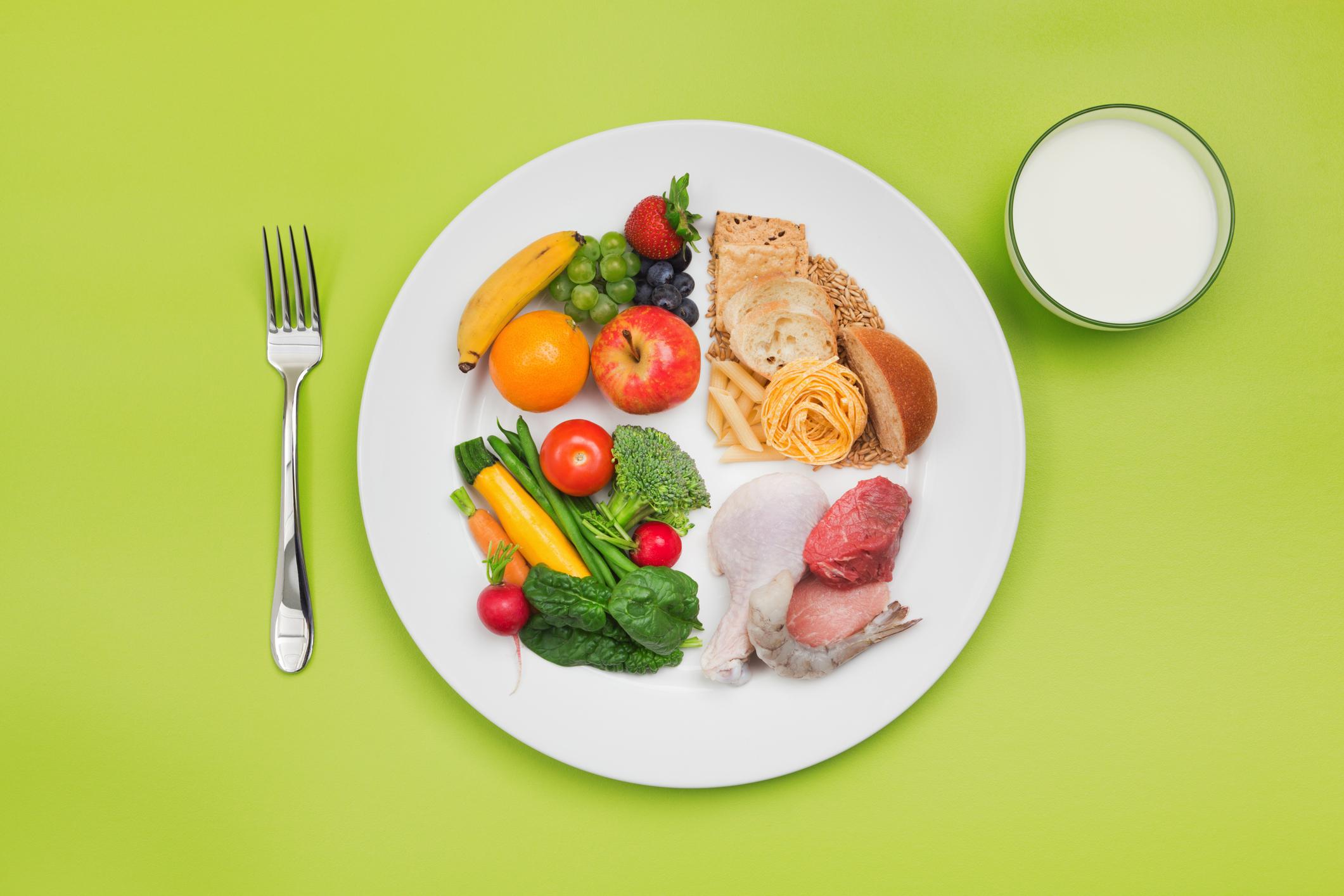The food choices we make have a direct impact on our health. Good nutrition means eating a balanced diet of nutrient-dense foods that help our bodies work their best. In the U.S., the Dietary Guidelines for Americans are revised every five years. These guidelines are designed to help us make food choices that promote health. They encourage using food groups to help guide the food choices we make when preparing meals and shopping.

So, let’s check in! What do your meals look like? Who does the grocery shopping? Who does the cooking?
Do you include vegetables and fruits every day – salads, cooked vegetables or raw veggies and fruits for snacks?
- Aim for five veggies and fruits each day. Most of us eat only three, can you do better? Consider having washed and cut veggies ready to eat in your fridge or fruit in a bowl on your counter.
- Do you use low-fat dairy products (or soy or almond milk products)?
- Aim for 2-3 servings daily of milk, yogurt or cheese daily. Most people only get one or two servings. Consider having cheese sticks or yogurt for snacks to get more of this food group into your daily diet.
How about whole grains in meals and snacks?
- Aim for three whole grain foods every day. Most of us are eating only one whole grain food a day! Try adding oatmeal, brown rice, quinoa, multigrain breads or popcorn.
Are you reading those 'Nutrition Facts' labels and keeping an eye on added sugar and salt?
- We should limit added sugar to less than 10% of daily calories, that’s about 200 calories or 50 grams of added sugar. Most of us consume 75 grams of sugar daily! Where is your added sugar coming from? The number 1 source of added sugar in the US is soda. One 8-ounce can of regular soda has 39 grams of added sugar! You should also watch for added sugars in cereals, flavored coffees, energy/sports drinks and supplements.
- We should aim to keep sodium intake at 2300 mg daily. Do you know how much sodium you are getting in your food? One teaspoon of salt has 2300 mg of sodium, and most of us are taking in 3 to 4 times that much! Take-out meals, packaged foods and salty snacks add up – so eat whole foods whenever possible and look for “light in sodium” to find packaged items with lower sodium.
Good nutrition contributes to our overall physical and mental health. It’s worth putting in a little bit of extra effort to make the foods we eat count.
